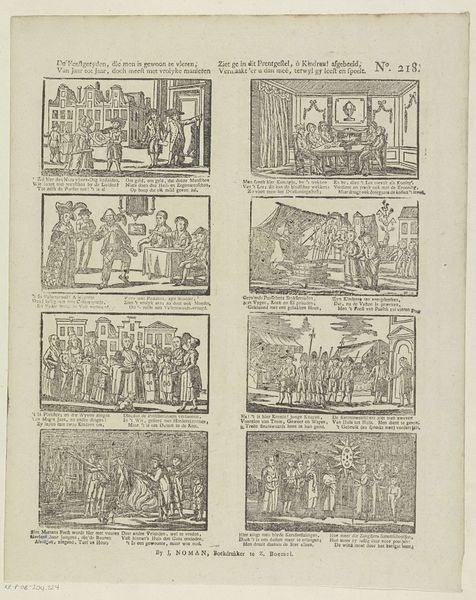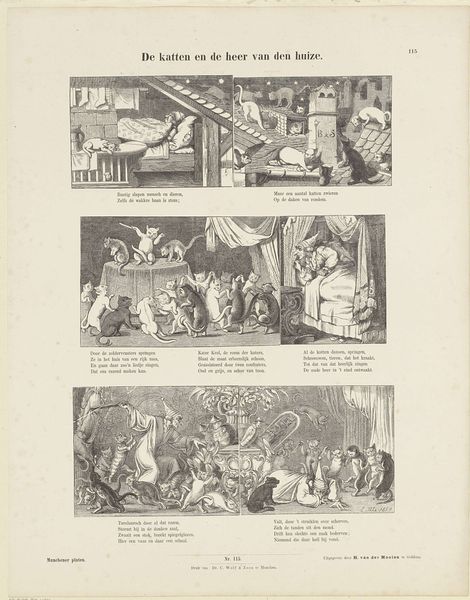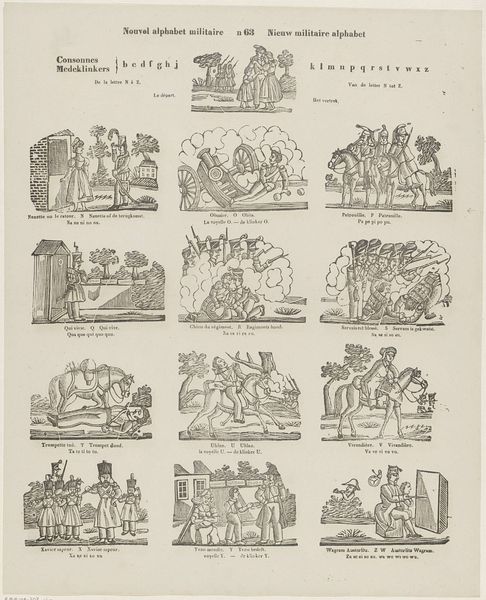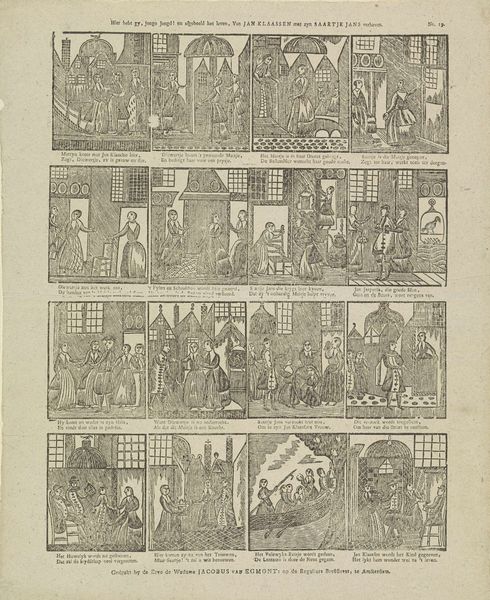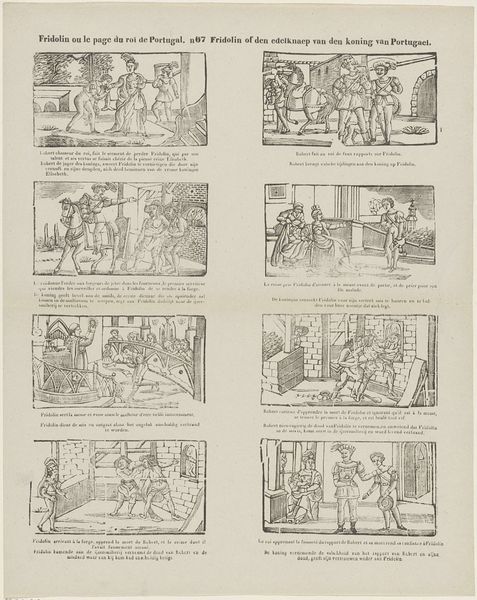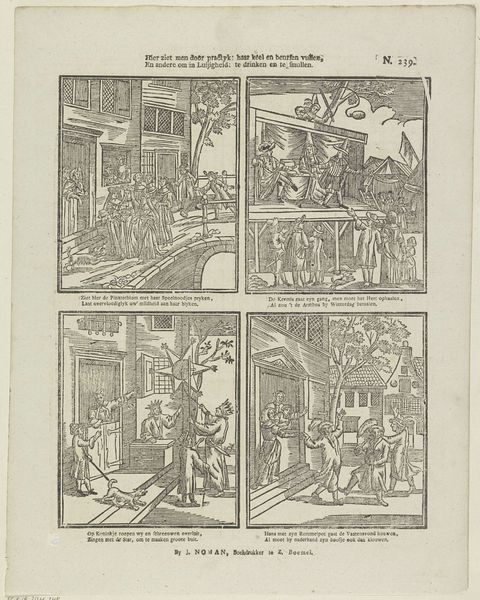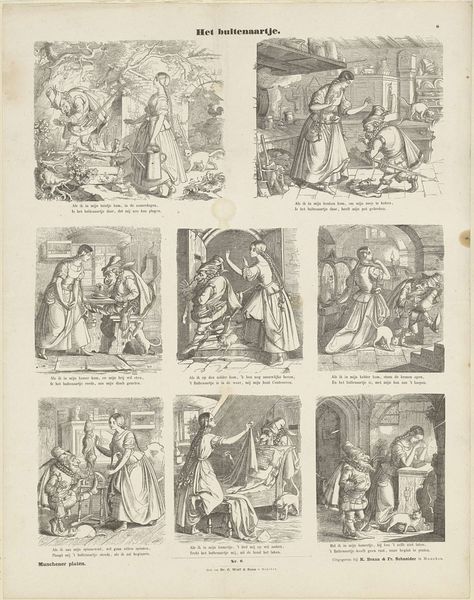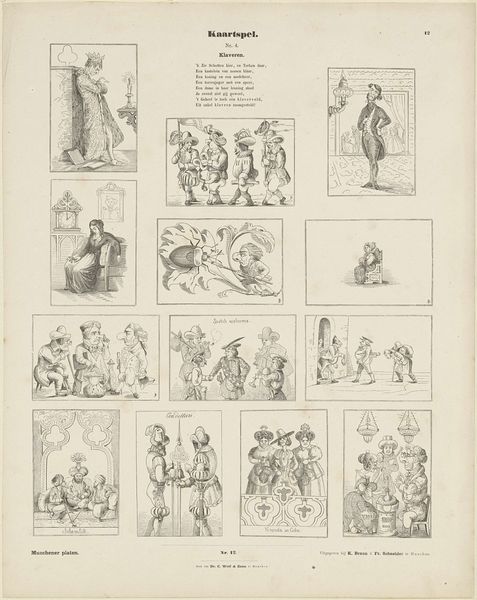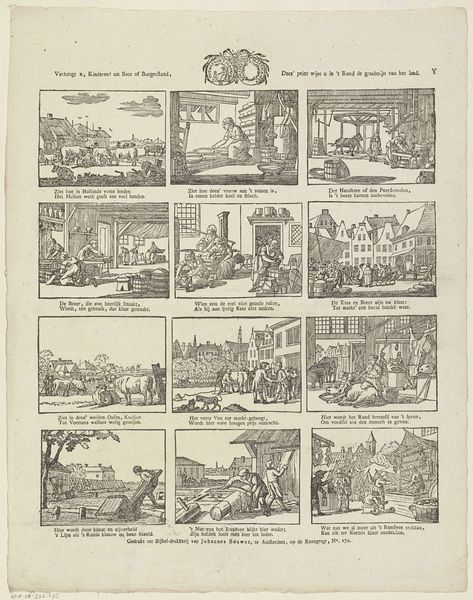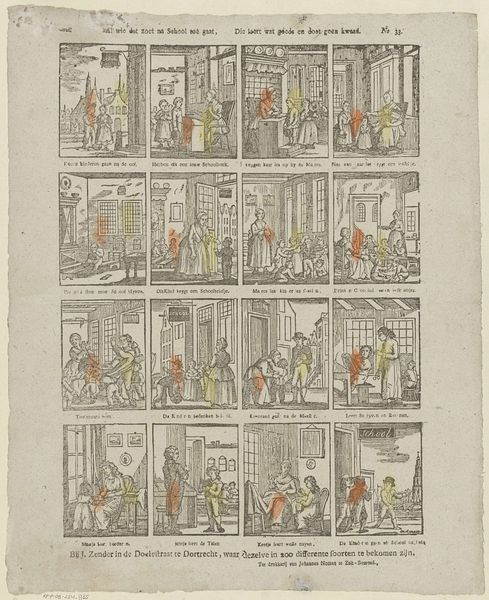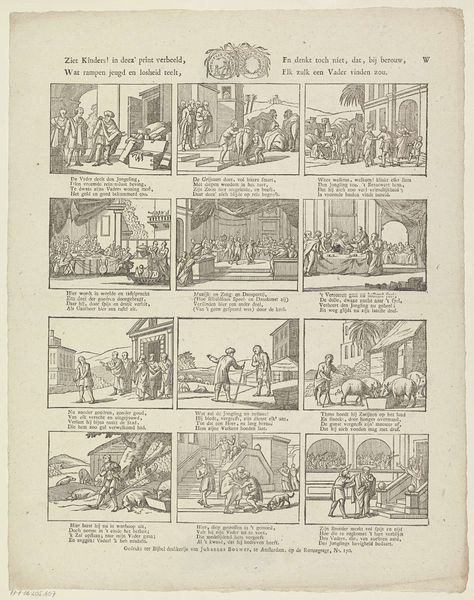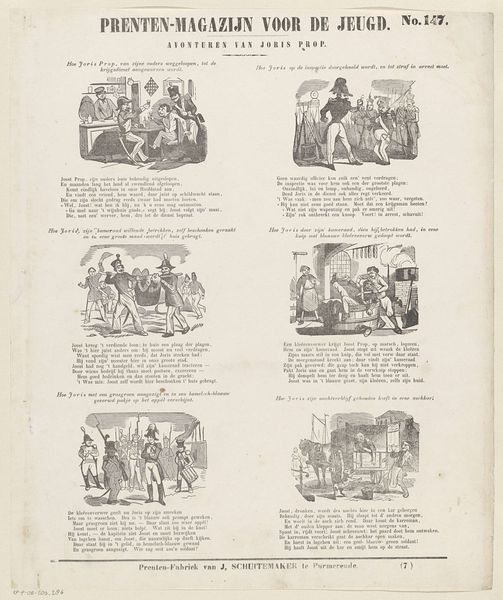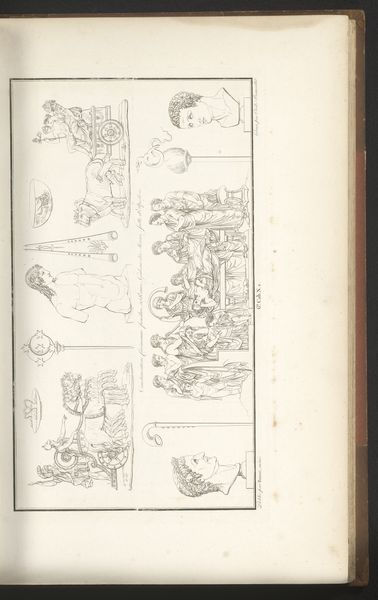
Hier ziet gy Kloris met zyn Roosje, / Dat lief en aardig suikerdoosje! / Zy houden bruiloft met elkaar; / Geluk en zegen aan dit paar 1848 - 1881
0:00
0:00
drawing, print, ink
#
drawing
#
narrative-art
# print
#
figuration
#
ink
#
folk-art
#
line
#
genre-painting
Dimensions: height 385 mm, width 314 mm
Copyright: Rijks Museum: Open Domain
Curator: This print by Lutkie & Cranenburg, titled "Hier ziet gy Kloris met zyn Roosje, / Dat lief en aardig suikerdoosje! / Zy houden bruiloft met elkaar; / Geluk en zegen aan dit paar," was created sometime between 1848 and 1881. What strikes you initially about it? Editor: Well, the overall feeling is quaint, almost like looking into a series of meticulously arranged dioramas. The heavy use of line work gives it a stark, graphic quality, but also a sense of gentle folksiness. It reminds me of traditional story-telling. Curator: The composition certainly reinforces that impression. Each of the eight vignettes acts like a panel in a comic strip, presenting scenes from what appears to be a wedding celebration. Lutkie & Cranenburg really maximized the narrative possibilities within this single print. Consider the consistent use of line, especially contour lines defining the figures; it presents the subject as a cohesive visual statement despite its fragmented nature. Editor: Absolutely, and looking through a more critical lens, I see echoes of the entrenched social rituals within 19th-century Dutch society, particularly around marriage and community. Note the central roles assigned to the men, versus how the women's are displayed and confined, almost as accessories for the event. The artwork acts as both a window into this historical context but also a subtle mirror reflecting patriarchal social structures of that period. The labor seems evenly distributed through a modern eye, so that is important to note. Curator: An interesting counterpoint, indeed. Looking again at the compositional elements: the careful balance between the figures, the deliberate use of architectural elements to frame each scene—aren’t they used here to convey not merely social constraints, but order and harmony within that social space? Each interior becomes almost like a stage, carefully arranged for a tableau vivant. Editor: True, but this ordered vision obscures, or perhaps naturalizes, underlying power dynamics. The idealized scenes, combined with the decorative flourishes, create a sense of sanitized nostalgia, downplaying potential discord. We cannot overlook how historical context shaped not only the event depicted, but the way that artists rendered it. Curator: An important point, to view historical material through a discerning eye, aware of context and subjective construction. Perhaps by examining this print through its formal devices we begin to discover exactly what is made clear – and also obscured, which ultimately shapes our experience. Editor: Exactly, whether we’re looking at form or broader historical currents, ultimately, our interpretation informs not just the work but our present understanding of its lasting effect.
Comments
No comments
Be the first to comment and join the conversation on the ultimate creative platform.
